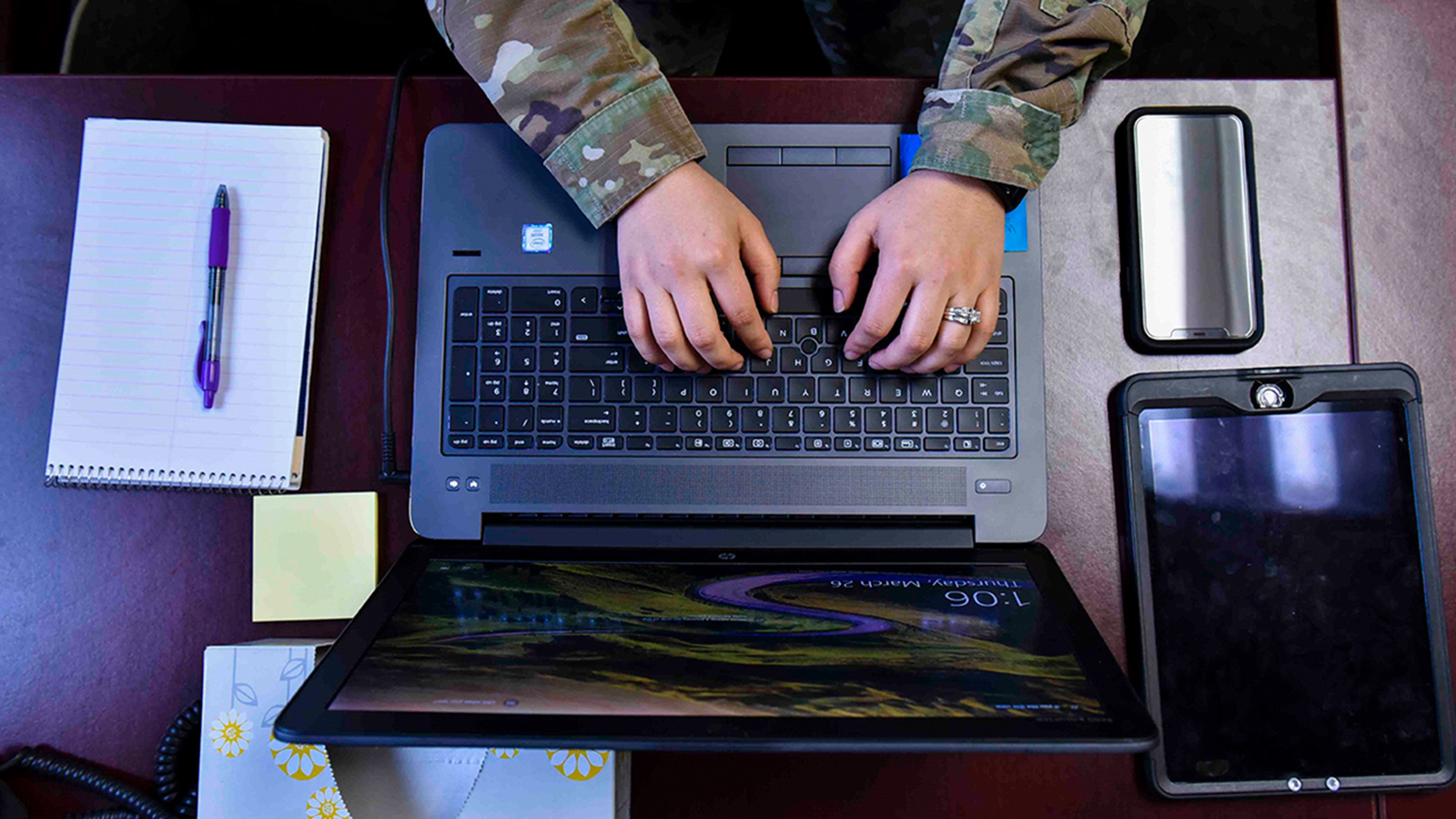Stay Up to Date
Submit your email address to receive the latest industry and Aerospace America news.
Aerospace engineers and others will be able to access classified networks from home
The coronavirus pandemic separated thousands of U.S. service members, Defense Department civilians and contractors from the highly classified information they need to do their jobs each day — data they can’t just bring home or access on the unsecured internet.
So, as the United States began social distancing, the Air Force Research Laboratory accelerated the rollout of a new way for aerospace engineers, intelligence analysts, research physicists and others to securely access classified networks remotely.
AFRL calls the initiative deviceONE. This month contractors authorized to handle classified equipment began home deliveries of jump kits consisting of modified off-the-shelf laptop computers. The laptops are loaded with software developed under a National Security Agency project to securely connect users to classified networks hosted on servers in Hawaii. About 20 kits have gone out so far from an initial batch of 40.
The uses will be myriad. At AFRL, for example, engineers or other professionals could log onto deviceONE to help prepare computer models of aircraft or projectiles for wind tunnel tests, said John Woodruff, the program manager for the SecureView laptops who is based at AFRL’s Rome, New York, site.
Thousands more deliveries will follow, as vendors such as Dell, HP and Panasonic deliver more laptops to AFRL for modification. Those won’t just go to AFRL workers, but also staff at dozens of other Air Force organizations, and possibly other military organizations, Woodruff told me in a phone interview.
The program could last far beyond the COVID-19 lockdowns, potentially giving airmen and troops who depend on classified data a convenient new way to access those networks at far-flung, austere locations in Afghanistan, countries in Africa and elsewhere.
DeviceONE is part of the Air Force’s Advanced Battle Management System effort, which seeks to find new ways to connect aircraft, satellites and operations centers and share data in the field. The initiative has three elements:
- Virtual Desktop Information, or VDI, a series of cloud-type servers at Pacific Air Force’s Hawaii headquarters that store data and applications such as Microsoft Outlook — basically everything to run a user’s entire desktop remotely.
- SecureView, the lightweight, thin client-style laptops that do little more than access the classified network and don’t allow anything to be saved to the hard drive.
- Commercial Solutions for Classified, or CSFC, program, which connects the SecureView laptops with the VDI servers. CSFC, based on technology developed roughly six years ago by the National Security Agency, combines virtual private networks to process classified information.
AFRL was already working on combining those preexisting technologies, but the coronavirus pandemic made the need to get it into the field even more pressing.
AFRL hurried to release the latest version of SecureView, and then worked with several Air Force organizations to get deviceONE approved for rollout at the end of March. The approval process took place at “unprecedented speed,” Woodruff said. “What normally takes months was compressed to five days.”
Now that the first 40 kits have been prepared with the proper security and other software, Woodruff expects the next thousand laptops to arrive by late April.
The next phase of the project will lay the groundwork for deploying several thousand more deviceONE units. Each user’s computer costs less than $2,500, Woodruff said, and adding thousands of more users to Pacific Air Force’s infrastructure will likely cost between $6 million and $10 million.
A nontechnical roadblock could lie ahead, Woodruff suspects. Suitable laptops could become scarce as governments, schools and companies around the world shift to teleworking.
Woodruff said AFRL has kept good relationships with top officials at vendors such as Dell, to try to convince them to prioritize their orders as much as they can.
“We’re all trying to work remotely all of a sudden,” Woodruff said. “It’s very difficult to get the quantity of laptops that we’re discussing, quickly, from the manufacturers.”
About stevel
Related Posts
Stay Up to Date
Submit your email address to receive the latest industry and Aerospace America news.




